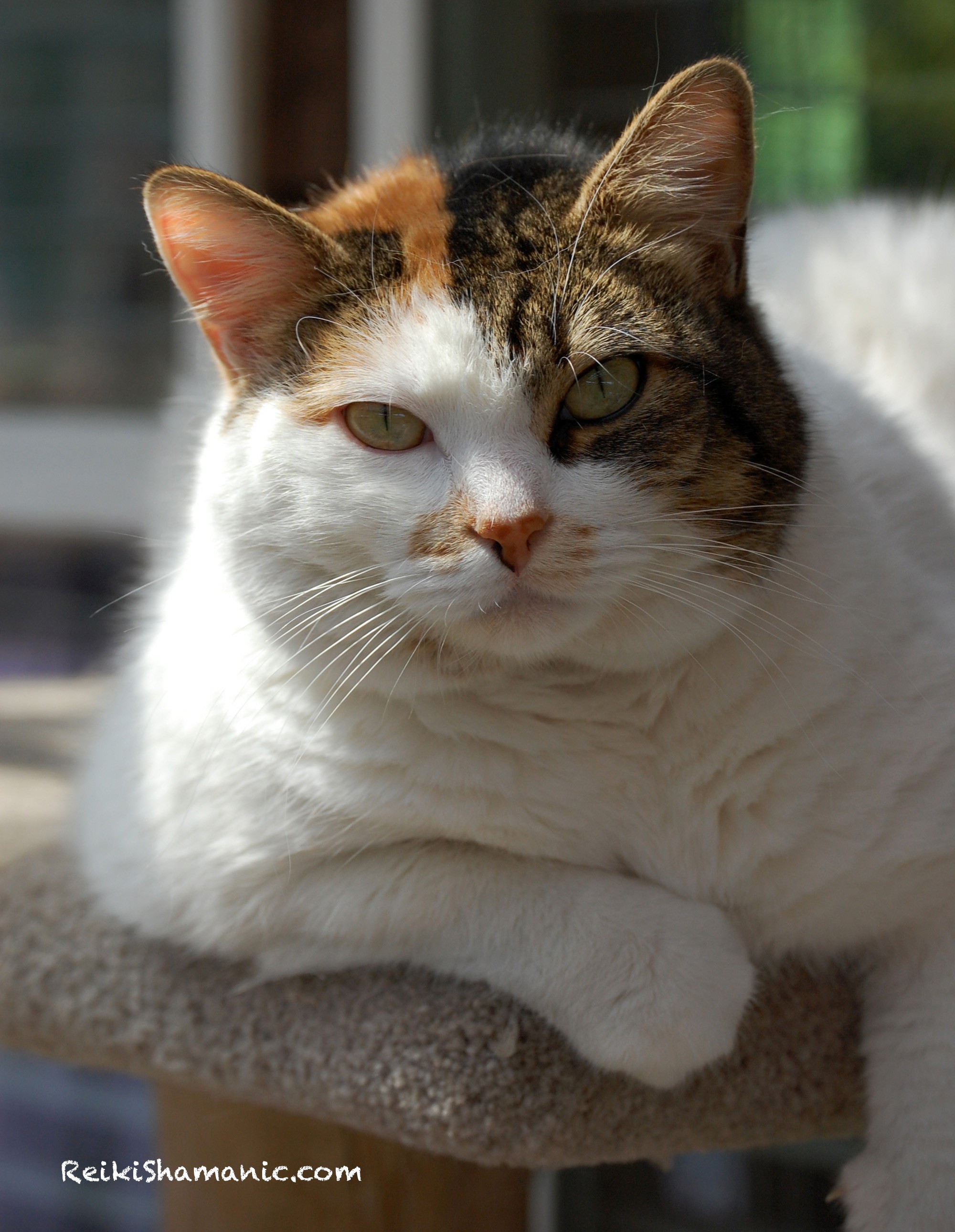
Dare to Care, Saving Shelter Animals
In 1982, I was living in Laramie, Wyoming, and decided to take a class on “how to get published.” The teacher was Donald Murray, a Pulitzer-winning journalist. I was not really certain why I was taking the class other than the opportunity to be guided by someone who could write well enough to win such a prestigious award. In retrospect, I think it was my writing blood yearning for an outlet.
My assignment for the class was to choose two topics, write them up as a query to a publisher, and submit the final for publication. Having no idea what to write about, I decided to write about what I did know—animals.
Topic Number One was a story about my pet rats (which ultimately resulted in a cooking column for the University of WA student paper, a story for another time).
For Topic Number Two, I approached the local animal shelter and asked if I could research an article about the shelter and the animals they tried to save. They agreed, and I spent a week tracking the animal residents, looking for the angle that would result in a good story. I got more than I expected.
But before the final choice of story was made, there were others that did not get told. The Laramie Animal Shelter is a city shelter, and like so many others across the United States, small and underfunded. Staffed by dedicated and hardworking men and women who did their best to make the right choices and care lovingly for the many animals that came their way—an overwhelming tide of animals. At that time, over 10 million animals were euthanized in shelters every year due to a lack of enough homes. The Laramie Animal Shelter was no exception; as of 1982, an average of 25 percent of its dogs and 12 percent of its cats had to be euthanized.
Most of the 24 cages and 35 kennels at the shelter are usually filled. The animals are well taken care of, but they lack one thing—a loving owner. Everywhere you go, the paws reach out for you, and the eyes of the animals are filled with the hope that you might be the one they are looking for.
As I cruised the aisles, face after furry face stared back at me. The dogs would lunge joyfully toward me in hopes that I was the answer to their canine prayers. Number 4717, an eight-month-old puppy, was no different. For every visitor, she put on a tail-wagging exhibition guaranteed to soften the hardest heart.
My attention was caught by one large black dog who did not greet me eagerly; he huddled in the back of his cage, and his gaze spoke volumes to my heart—he wanted to trust but was no longer sure he could.
I took notes of the numbers on each cage and the occupant and asked the shelter workers what background stories they had. Most dogs had been found wandering; numbers increased dramatically during the summer. Tourists frequently left Fido behind by the side of the highway. Apparently, a dog was too much trouble to take care of while having fun on vacation. One story that stood out for its special lack of humanity was the dog surrendered because the owners had redecorated, and he did not match the new décor.
The cats were less effusive in their greetings but nonetheless hopeful. My gaze was caught by one way up top, who peered down at me and meowed. The size of his big apple head belied the information on the cage that he was female, and when I questioned a shelter worker, his sex was double-checked, and it was discovered that she was a he. My question bought him another week of life and the possibility that he might find a good, loving home.
Every week, there are animals that have to be euthanized to make room for more, an unending cycle. I spent a great deal of time interviewing the shelter workers, asking about their lives and how they handled the difficult task they had chosen to do. One worker said, “You get used to it, but you never get to the point where you can accept it.” Another stated, “Sometimes I almost cry if I have to put an animal to sleep by myself. I look at it this way: I would rather put an animal to sleep than have it be pregnant or be a puppy out in the cold, be hit by a car, come down with disease, or be neglected.”
Much as I dreaded the thought, I finally asked the workers if I could be present when the next group of animals was euthanized. I felt as though I would be letting the animals down if I were too much of an emotional coward to witness the reality of what happens when a lack of spaying, neutering, and proper education results in overpopulation. The workers were concerned as to how I might respond and were reluctant at first to agree to my presence. Ultimately, they made me promise that I would not cry—a promise that I sincerely hoped that I could keep.
When I arrived that day, I was understandably nervous, and as it turned out, I was about to get my story.
The cats were first; a paw was pulled out of the cage, and the injection was administered quickly. Next were five dogs, and puppy Number 4717 was among them. One by one, each of the four dogs was placed on the examination table and given an injection to the heart. Each dropped instantly. It was all so quick and business-like that I was able to hold strong emotionally as I had promised, although I imagined that I would pay for my current emotional distance later, in private.
And then it was Number 4717’s turn. And the injection missed the heart, as sometimes happens. She did not drop instantly; it would take more time for the injection to take effect. So, they put her down on the floor to wander freely, and everyone continued on with their morning chores.
The puppy was thrilled to be out and ran from person to person, tail wagging happily. Her movements got slower and slower. Finally, she went to the man washing up the food bowls, and with a quiet sigh, she laid her head upon his foot and died.
At that point, I lost it; to honor my promise, I went to cry in the bathroom. Even now, as I write this, I am crying—even after all these years. I will never forget that moment as long as I live, one that spoke so eloquently of all the years of devotion and love those shelter animals had to offer, lifetimes that now would never be.
When I emerged from the bathroom, somewhat under control, the bodies of all the euthanized dogs and cats had been laid out in neat rows in the garage in preparation for transport to the city dump. Their bodies would be tossed into an earthen pit alongside road-killed animals, and some dirt would be bulldozed over them.
Lest you think this heartless, the city did what they could with what budget they had. There was not enough money to cremate the animals; this method of disposal was quite common in rural areas. It was tough to stay, but I hung in there, feeling as though my presence at least bore witness to the lives of these animals, victims in a quiet war on overpopulation, and gave them some honor in their passing. They did not go unmourned; I cried for them and the countless others who had gone before and the untold numbers yet to come.
Here is the original beginning of “The Animals Are Waiting At the Shelter” and the epitaph that I wrote for the puppy:
“Number 4714 waited for her owner for five days.
“No one came.
“She waited another five days for someone to adopt her. Again, no one came. She was given a shot of Sleepaway, and at the age of eight months, the black and white puppy went permanently to sleep with her head resting on the feet of the only person who cared, an officer of the Laramie Animal Shelter.”
At the time that article was submitted to my professor, Donald Murray, he thought it was well written but suggested that there could be more emotional appeal in it. I disagreed, wanting to reach people with logic. In retrospect, I realize that deep down, I was scared to expose myself emotionally; I just was not brave enough.
Now, years later, I realize that someone else besides the shelter workers cared; I did, and I still do. I now have the emotional chops and the courage as a writer to dare to share how I felt. This new article was written in hopes that my words will inspire others to care and to take action.
I wanted to thank Professor Murray for his encouragement and let him know that his guidance made a difference. Looking him up, I discovered he had passed away in 2006 at 82, immersed in an internet project to mentor aspiring writers. Wherever you are now, Prof. Murray, I hope you are pleased that I finally took your advice to heart and put mine out there in hopes of making a difference.
We have made progress in the intervening years; now, only 4 million animals are euthanized each year due in part to aggressive spaying and neutering programs, but that is still 4 million too many. The bad guys are not the shelters but unknowing or uncaring people who add animals to an already taxed population.
It is not enough to just spay or neuter the companion you adopt. The choice you make when you adopt a pet could take a home away from a shelter animal in need.
Here are a few suggestions on how you can help:
• Check with rescue organizations before purchasing or adopting a puppy or kitten; there are too many adults needing homes.
• Want to adopt a purebred dog or cat? Do your research on the breed that fits your family lifestyle best. Never buy from backyard breeders.
• Encourage your neighbors to spay and neuter; while they may love Fluffy so much that they want kittens like her and feel educating their children in the miracle of birth is a good lesson, the harsh reality is the birth of those kittens means fewer homes for animals on death row.
• Share this article with as many people as possible, whether they have pets or not. They may be in a position to help educate someone else.
• Got feral cats in your neighborhood? There are Trap Neuter Release (TNR) organizations that can help you get them spayed or neutered.
Dare to care and show that you care—you can make a difference!
Postscript: After he ran out of time for the second time, I adopted the male cat initially mistakenly identified as a female. He was a big, loving mush-bucket of a tiger cat, and we named him O’Malley. Goes to show you the power of a single glance!
>>>>>>
Learn how to connect more deeply with animals, restore balance to your life, increase intuitive skills, and help heal the Earth with live Reiki and shamanic teleclasses, available worldwide.
>>>>>>
SHARE THIS ARTICLE
You are welcome to share this article with others by email, on your blog or to your mailing list so long as you leave it intact and do not alter it in any way. All links must remain in the article. And, you must include the copyright notice and the bio.
©2009 Rose De Dan. All Rights Reserved. www.reikishamanic.com
A WILD WAY TO HEAL
Rose De Dan, Wild Reiki and Shamanic Healing LLC, is an animal communicator, Reiki Master Teacher, shamanic energy healer, and author. Her classes, sessions and ceremonial work are inspired by wild and domestic animals who have issued a call to action for personal and global healing.
Her book Tails of a Healer: Animals, Reiki and Shamanism features heartwarming stories about animals and their role in her evolution as an energy worker and shamanic healer.

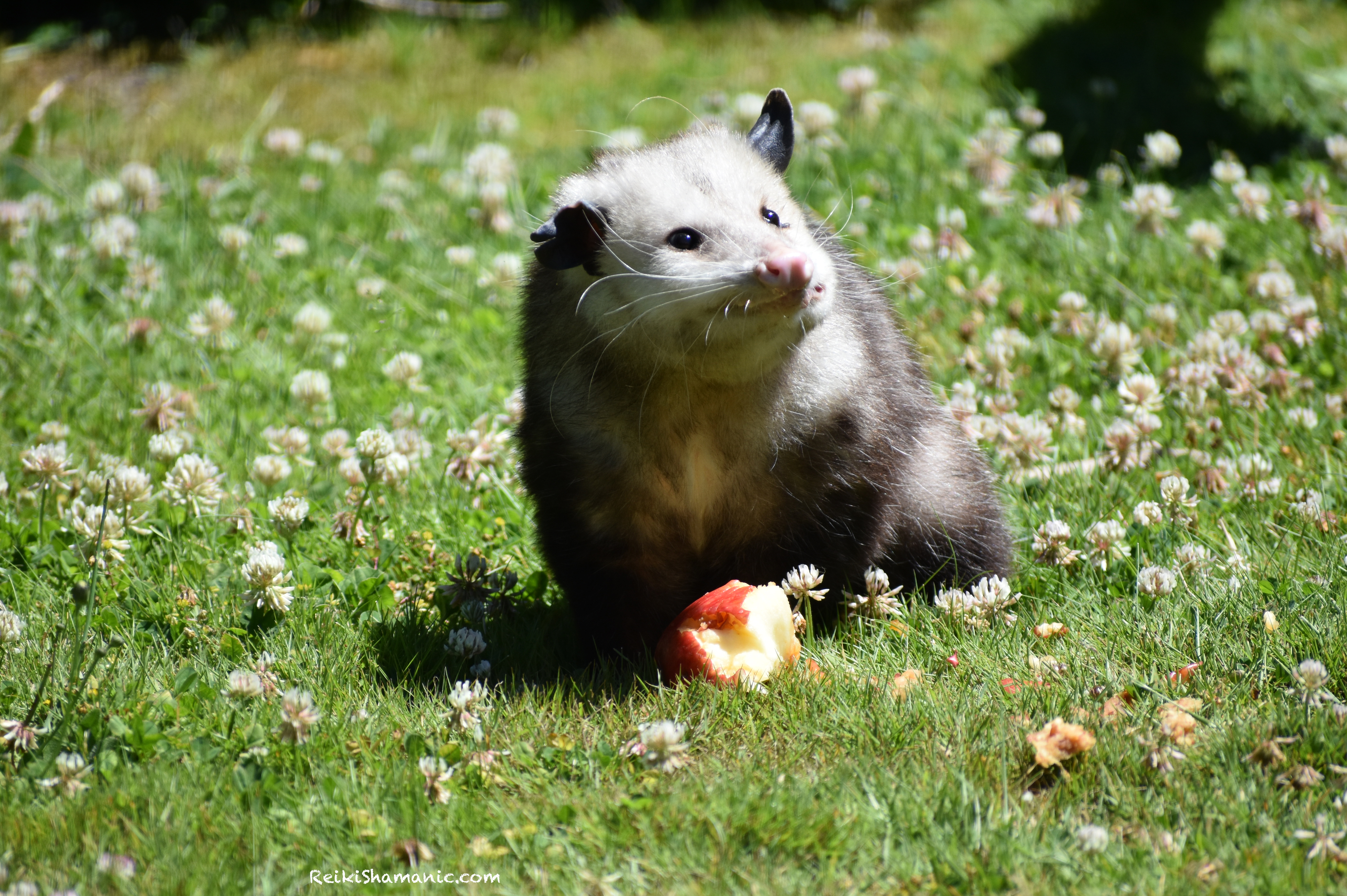
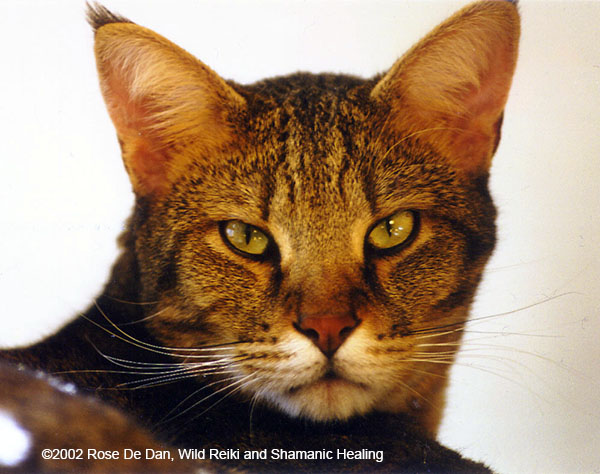
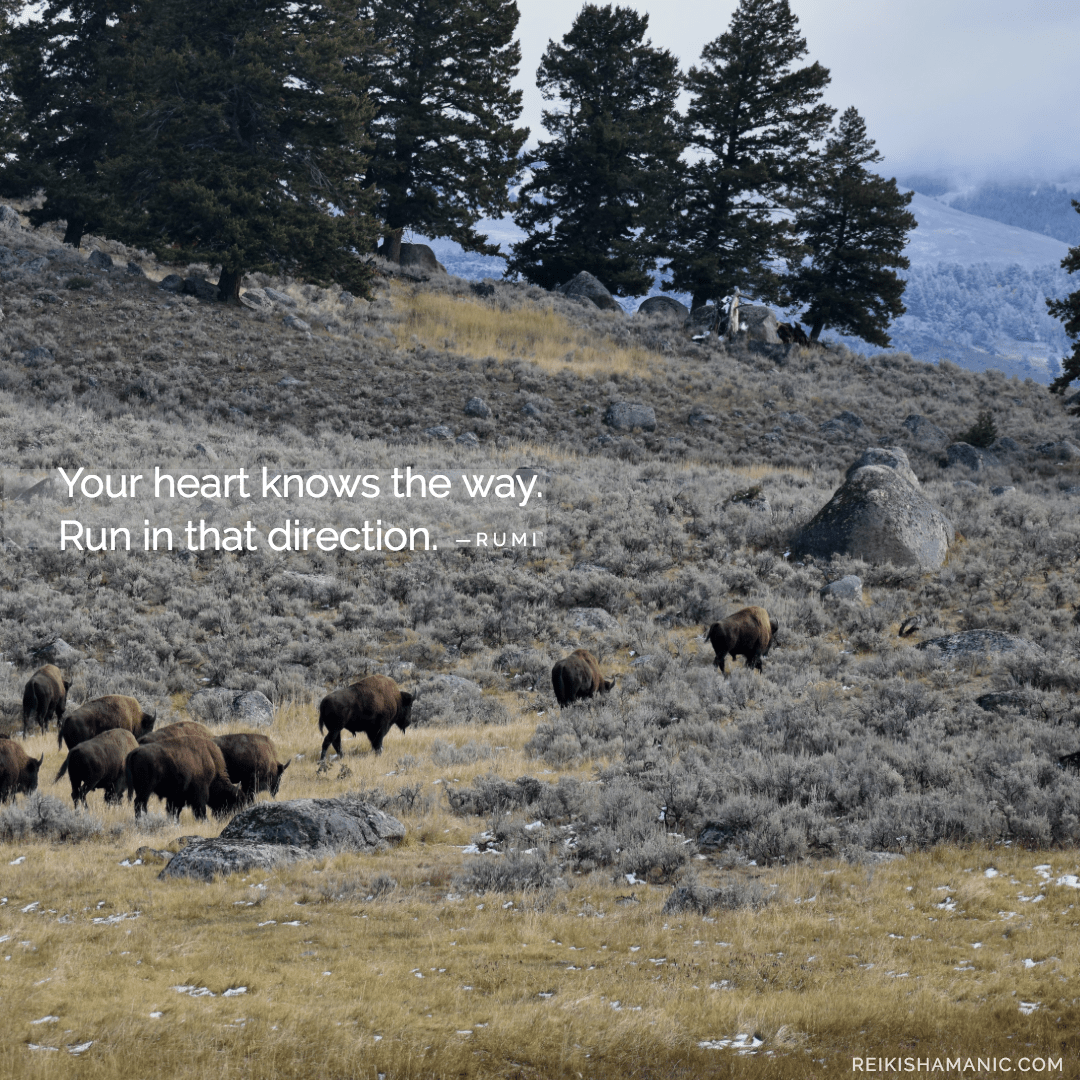
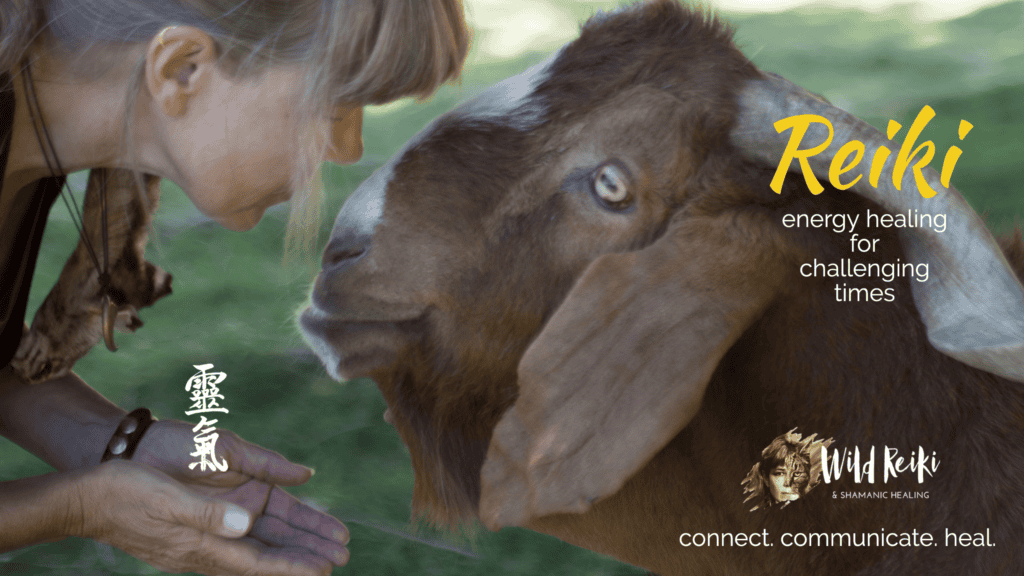
Thank you Rose. I had a (indoor 2 cat) pet sit last week and the outdoors was teaming with felines. Most were well fed ferals. I asked the homeowners about all these cats and they had named them all but had only recently moved into the neighborhood. There is a ‘cat lady’ a few doors down.
I asked if they would mind if I rounded up a couple to spay or neuter and they were pleased to have help with that. Well, I haven’t done anything like this before but I do have friends that have. I borrowed a couple of traps, and caught 8 I think. 2 had ear tips, one was a tame cat from across the street and another was a spay female. I was so nervous I left the towels on while I managed to get the cats into my car two at a time. I was afraid to look 😉
One turned out to be pregnant and the fetuses were aborted and she spayed, two others got snipped and ear tipped. The fourth had a huge abscess on his face and clearly needed medical attention. He is now neutered and receiving medicine until the end of the week then I will pick him up and take him back.
I hope that the homeowners will continue until they are all snipped and tipped. It was really special to let the 3 go back today. I just know they will have a better life and that they are not going to make more kittens 😉 I didn’t know it was spay day USA but there must be some vibe out there.
Thank goodness there are people getting the word out that this can indeed be done and though some driving and worrying involved, Pamela Brumell took care of all the dirty work. The spay neuter project did them for free. Pam is keeping the Grandpa male until he is ready and said that we saved his life. Just getting that little female done saved countless others too I bet.
Well, again Rose, thank you for your spirit and gift for turning emotions into words.
[…] this very important day my friend Rose DeDan wrote a beautiful and very moving article on her blog, Dare to Care, the Life You Save May Be Someone’s Future Pet. If you get the time please take a moment to read […]
Dear Betsey, thanks so much for sharing your inspiring story of multiple feral cat rescues, it truly warmed my heart to hear of the time and care you took to help.
For anyone who does not know, ear tipping is routinely done for feral cats that have already been spayed or neutered so that they can be easily identified, and not have to endure another trip to the vet.
Dear Lena, wonderful vet and friend who writes A Path with Paws, I hope you get many visits to read your post “In honor of Spay Day,” at http://pathwithpaws.com/blog/2009/02/24/in-honor-of-spay-day/
It was truly a moving insight into what it is like to be a veterinarian working in a city shelter. Thanks so much for sharing. Warm wishes, Rose
My name is pamela. I help her get the cats fixed. I TRN feral cats. I trap about 30 every two weeks. It is kitten season around the corner. If you are in the Seattle Area and if anyone is interested in fostering please let me know. I am calling myself Feral Cat Assistance and Trapping. (F.C.A.T).
206-427-6454 website coming hopefully
Hi Pamela, let me know when you get the feral cat website up and I will help promote your work in my newsletter in Seattle area. Thanks for the very good work that you do!
Rose
Hello Rose,
I read your article, and I have to say albeit I am myself just an amateur writer, you are a wonderful writer!
When I was in college (BA English) every opportunity was devoted to something to help the animals. In Speech 1A the assignments got gradually more challenging to conclude with the Final being a Persuasive speech. I had made up my mind at the beginning of the semester that it was to be devoted to educating my audience of animal over population in the US. I quickly got busy on the visuals to be used early on. Since my first job at the tender age of 14 was at the Santa Clara County Humane Society (North. CA), I had an image in my mind that had stuck since I saw for the first time back then the, “Dead Bin.” Back then (early 70s) they still used decompression chambers (later the SCCHS was investigated and fined heavily for its use), which as you may know slowly suffocated to death the animals stuffed inside. At the conclusion of their deaths (I was told it took about 20 minutes) the bodies were removed and unceremoniously tossed into a room-sized, commercial dump-bin, until it was full enough to see the pile of bodies high up over the rim. One day I saw this very full bin just before it was to be picked up by the waste company. I’ll never forget that sight as long as I live. For my speech-visual (in 1990) I painted that image in a very large size. During my speech I kept it covered with a curtain until a certain point. Then I dramatically swept the curtain off. I don’t mind saying the entire classroom gasped at what they saw.
I do want to point out however, that I used statistics from the Humane Society of the United States for my facts presented during my speech, and the numbers of animals put to death were way lower in 1990 than in 1982, and also way lower than today. I feel today that we are not actually making good progress as a society in detering the problem. We are not for example clamping down on back yard breeders, puppymills, and especially on organizations such as the AKC. I still meet people today who believe that if a dog is, “AKC registered,” then it is perceived to be almost a duty for them to breed, “At least a couple of litters” out of it. Please don’t take this as a criticism, as I’m sure your numbers are right. However, one may only take note of the dramatic rise in congenital defects in purebred animals across the board to see how breeding practices have changed…and not for the greater good.
This comment was posted elsewhere a few days ago, and I received an answer from Rose. As a follow-up I would like to add that yes; the numbers in the shelter-world are very much skewed. For example we have several “no-kill” shelters here that won’t count those deemed “unadoptable.” However, the standards used to determine adoptable criteria are so varied, and subjective that it can equate to in plain language; falsified documents.
I would also like to say in reference to my painting; I still have it (of course!), and recently I had a professional photographer take a picture of it, so that I might make prints of it for any animal rescue organization who might be able to use them. There are currently notecards with the prints inside on display (and for sale) at the gallery of Wild Horse Ranch Rescue in Gilbert, AZ.
If it is possible I would like to upload it here if anyone would feel it would be beneficial to do so.
If it’s not possible may I suggest going to my own blog to view it and the entire conversation; http://creaturefeaturetterescue.blogspot.com/
Thank you for writing this and for allowing me to post it on my site. It takes a courageous person to venture behind the scenes at a shelter and witness what you did. I only wish all of the people who believe that spay & neuter laws are nothing more than a state mandate to ‘take away their rights’ could be forced to see the results of their argument. Janice Anderson, a breeder who sits on the Kern County AC commission( yes – a breeder making decisions about animal control ! ), recently made objections to the new ‘Pet Responsibility Act’ ( a new attempt at a state wide spay and neuter initiative) accusing the State of trying to ‘legislate morality’, when all the new law requires is an additional licensing fee for unaltered dogs and cats. 500,000 pets are killed in shelters each year in CA alone, at a cost to tax payers of 250 million dollars and these people ( Breeders/PetPac/AKC ) are talking about morality ? Animals are not commodities to be bought and sold , nor or they ‘property’ with rights attached. The greed and arrogance of people like Janice Anderson, and her fellow ‘Greeders’ is what is killing these animals and I guarantee none of them have ever been inside an animal shelter and witnessed the results of the position they have taken
This story was so hard for me to read, I literally stopped and closed the e-mail when I got the e-mail and just today (10 days later) was able to go back in to finish reading how #4717 died. My dogs are both shelter dogs and my heart breaks for all the other dogs that couldn’t be saved, that I couldn’t save. Your story hit so close to home for me because when we adopted my male puppy, I had to take him away from the shelter in South Lake Tahoe where he had a “friend” that he used to spend all his play time with. She was a beautiful brindle named Petunia, a sweet pit bull who probably wasn’t going to be adopted at all because of the stigma issues with the breed and insurance requirements in CA & NV. I remember driving up to the place and seeing them playing out in the enclosure and then driving away with our boy and seeing her watching us through the fence, as if she knew she was seeing her friend for the last time. It was horribly heart-wrending for me. It was a very small shelter, one that couldn’t afford to keep unadopted or misbehaved dogs alive. They did the best they could with what little they had. Thank you for being willing to observe the harsh reality of the problem so many people have created and for being a tireless advocate for the animals who have no voice. More people need to know the truth about what happens when animals are left in shelters and backyard breeders ought to be held responsible for their contribution to the cycle of wasted lives and lasting damage to the environment.